Outforia Quicktake: Key Takeaways
- Coyotes cause harm to livestock and pets and may pose a threat to people in certain situations.
- Coyotes can adapt to urban environments and be attracted to residential gardens.
- Non-lethal control methods like electric fences and repellents have limitations.
- Killing coyotes isn’t a long-term solution due to the hydra effect, where more are born due to resource availability.
- Preventing coyote attacks involves adapting human behavior, such as not feeding wild coyotes and maintaining a safe distance.
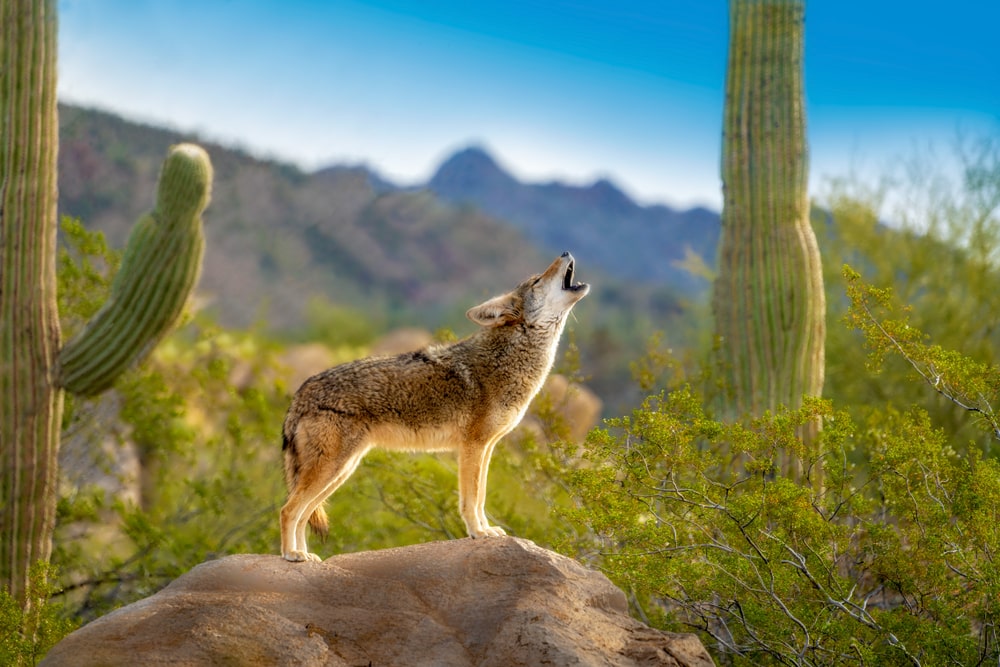
Coyotes have a bad reputation as a nuisance species that hunts and kills livestock. One estimate claims that coyotes kill or injure over 300,000 head of livestock annually in the United States.
In recent years, media and news outlets have also pinned coyotes as killers of domestic pets like cats and dogs and, in some cases, even children. These claims are warranted, mind you.
For example, in 2016, there were 16 coyote attacks in Los Angeles, California. That same year, reported cases of coyote attacks on pets were even greater.
Coyotes do pose a threat to people in certain situations. It would be wrong to think of them as harmless critters simply because they resemble our domestic furry friends.
Furthermore, more and more coyotes are taking up residence in suburbs and big cities, and it begs the question: how afraid should I be of coyotes? And are they really that dangerous?
Like most things in life, there are no easy black-or-white answers. But in this article, we’ll explore the dynamic relationship between coyotes and people, the effect coyotes have on livestock and pets, and how we can limit the chances of coyote attacks happening in the first place.
Stockmen vs Coyotes vs Livestock
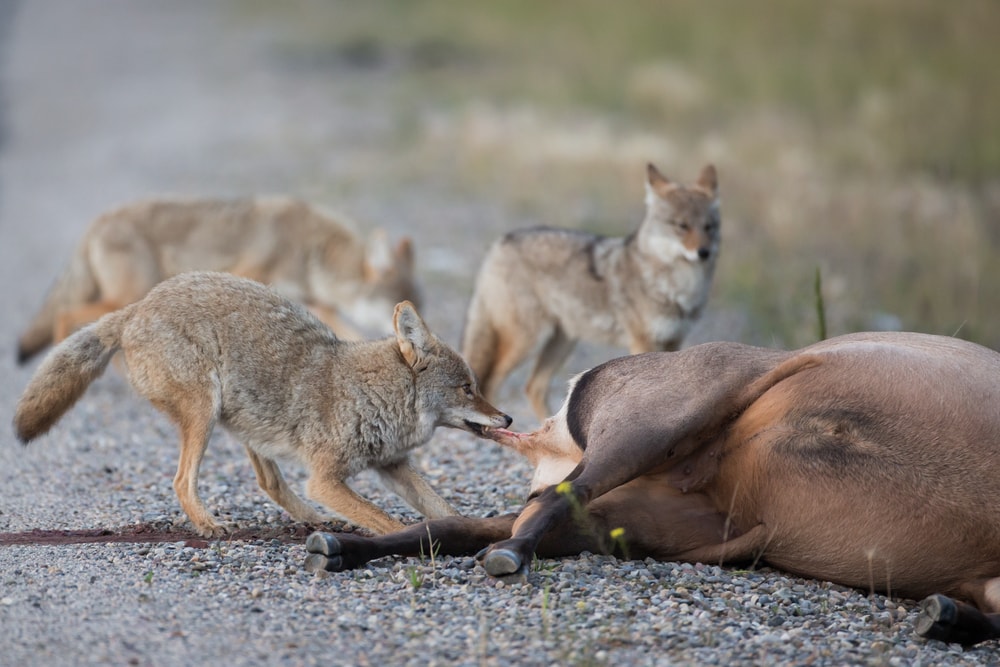
The feud between ranchers and coyotes is a tale as old as time. Or at least as old as when the first stockman (livestock keepers) arrived in North America.
Typically, stockmen used lethal force in their campaigns against coyote bandits. Lethal force includes hunting and shooting, trapping, or poisoning coyotes. However, soft-hearted stockmen may resort to non-lethal methods for controlling coyotes like electric fences, guard dogs (or guard llamas or donkeys; I’m not kidding, look it up), noise or light repellent.
The war between stockmen and coyotes is a bloody conflict indeed. As previously mentioned, coyotes kill around 300,000 head of livestock each year. But can you guess how many coyotes stockmen kill?
National Geographic reports that over 500,000 coyotes – you read right – are killed each year, usually hunted from the comfort of small helicopters.
Assuming that the estimate has been the same, that means that since 2000, at least 11,500,000 coyotes have been shot, trapped, or poisoned. That’s an animal genocide that rivals that of the passenger pigeons and American bison.
Stockmen Apologia

At this point, you might start sympathizing with coyotes. Sure, they kill a lot of livestock, but they need to eat, too! They have families to feed, mates to bed, young to raise, lives to live.
We, ourselves, slaughter over 36 million cattle each year in the United States, not to mention a sickening number of poultry, pigs, and lambs.
Okay, okay – there is something to be said about the number of coyotes killed each year by stockmen. But to reprimand stockmen for protecting their livestock (which is, quite literally, their livelihood) would be wrong.
If coyotes were taking livestock from the horrific industrial meat-making factories, I’d say more power to the coyotes. I don’t know about you, but if I were a cow, I’d rather spend my last moments between the jaws of a coyote than on a conveyor belt headed toward a guillotine, like something out of the Saw movies.
But, by and large, most coyotes are stealing from private ranches where stockmen depend on their livestock to support themselves and their families.
So it’s no wonder they take such drastic measures in keeping coyotes away – their livelihood would be at stake if they didn’t.
But is there another way to control coyotes that might lessen the widespread bloodshed? Will there ever be an end to the coyote and stockmen conflict?
Nonlethal Solutions: Do They Work?

Frankly, there will never be a perfectly peaceful way of dealing with coyotes.
As long as there is livestock in North America, there will be clashes between coyotes and stockmen. And, unfortunately, non-lethal ways of dealing with coyotes only do so much at keeping them at bay.
For example, remember those electric fences I mentioned? Well, that fence better be tall because coyotes can jump up to 8 feet high (2.4 m) and can easily clear most barriers. “So what,” you might say to a coyote, “I’ll just make my fence 10 feet tall.” “No problem,” the coyote would laugh, “I’ll just dig under it.”
Okay, so fences won’t work. How about noise or light repellents?
Unfortunately for stockmen, coyotes are intelligent and adaptable. Given enough time, coyotes will learn that noise and light repellents, while startling, are no real threat and can be ignored.
Fine, so fences won’t work, and artificial repellents won’t work, but what about trapping and relocating?

Honestly, you’d be doing the coyote a favor by killing it on the spot rather than wasting resources relocating it. Studies show that most relocated coyotes don’t survive long when displaced from their territory.
So, that leaves us with guard dogs (or guard llamas, or guard donkeys, which are somehow scarier than a guard dog). Livestock guardians are a good method of keeping coyotes away.
However, guard dogs can be expensive and require lots of training time that a livestock keeper might not be able to afford.
Just because these non-lethal coyote control methods have flaws doesn’t mean we should abandon them altogether.
But it does beg the question of whether or not it’s worth going through the hassle of setting up potentially fallible defenses when you could just shoot the coyotes and be done with.
Except, shooting coyotes doesn’t solve the problem, either.
You probably already wondered why, if 500,000 coyotes are killed yearly, how have they not gone extinct or suffered extreme population decline? The answer to that question is resource availability.
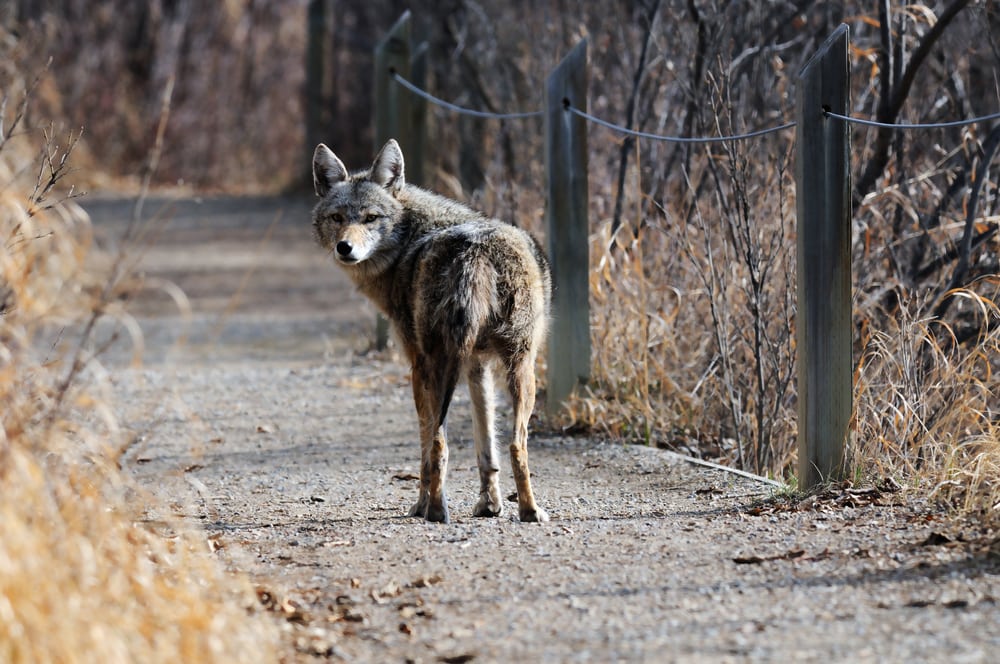
The population of an animal is directly related to resource availability. In other words, the more resources there are, the more animals there will be. The adverse is also true. You can find examples of this in human populations as well.
For example, after World War II, resources were no longer being pumped into the war effort. With plenty of resources now available in the post-war decades and returning soldiers eager to start families, a huge population boom occurred.
Today, we call the generation born in those happy years of surplus “Baby Boomers.”
As for coyotes, with so many killed annually, there’s a surplus of resources for the ones who escape extermination. With such abundant food sources available to a relatively small population of coyotes, they can breed more rapidly and successfully raise more offspring.
The National Parks Service calls this phenomenon the hydra effect. Cut off one head of the hydra, and two more grow back.
Or, in this case of grand irony, the more coyotes you kill, the more that will be born. And so the cycle repeats.
Unfortunately, there’s no end-all solution for dealing with coyotes. Sometimes, instead of fixing a problem, you must learn to endure it.
You may also like: 27 Wonderful Types Of Wolves (Fun Facts, Photos & More)
Coyotes and Pets

Aside from livestock, coyotes pose a threat to domestic animals like dogs and cats. Coyotes are moving to urban areas en masse (or urbanization is spreading into their territories), forcing them to adjust to new, more crowded environments.
One study showed that coyotes are attracted to fruit or veggies in residential gardens, where you might find a family cat or dog. Coyotes are opportunistic and won’t shy away from a meal when they see one. Unfortunately, that meal may take the form of a beloved pet.
That said, there is no concrete data on how many pets are killed nationwide by coyotes each year. So we don’t know how big (or small) the problem of pet predation by coyotes might be.
One writer even supposes that most people who claim coyotes killed their pets are, well, wrong.
He states, “I believe that far more pets, especially cats, are never found because their owners do not know how to effectively search or give up too soon (often because their friends and neighbors convince them that a predator killed their cat).”
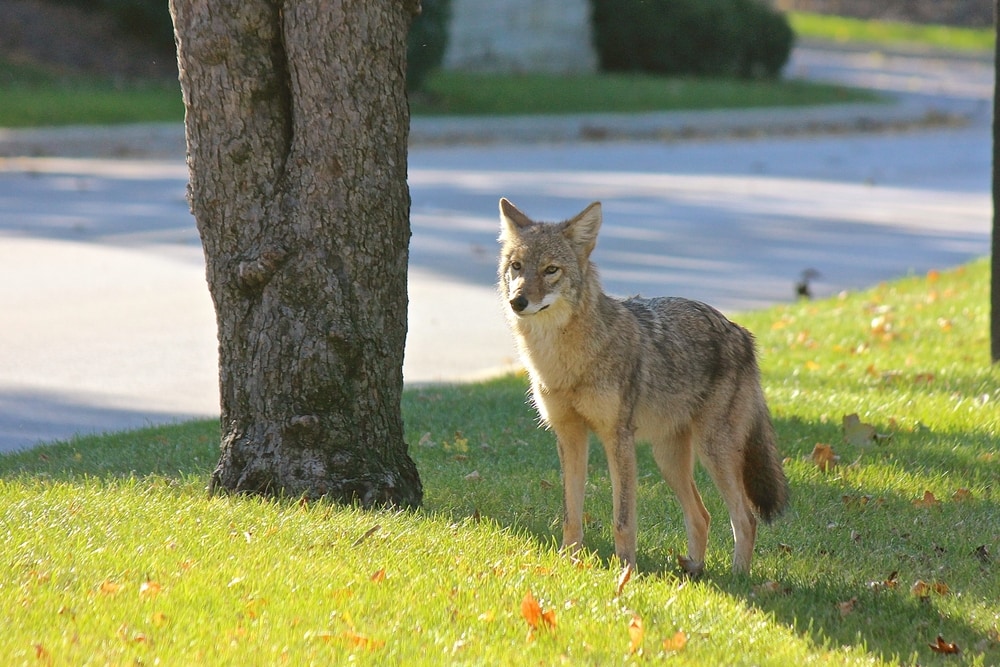
That’s not to say that attacks on our pets never happen. Unfortunately, they do.
In California, more cats and dogs are killed by coyotes than in any other state. In 1999, for example, out of 219 coyote scats collected and studied in southern California, 21% of them contained cat remains.
Remember, though, that these cats could have been feral and not family pets.
But what about in more recent years, as coyotes continue to move into more urban environments? Has the number of pet deaths increased?
Well, it’s hard to say because, once again, there is no concrete national data on the matter. But in 2016, over 40 coyote-related pet deaths occurred in Culver City, California.
Hopefully, that instance is an outlier and not an increasing trend.
Protecting Pets From Coyotes
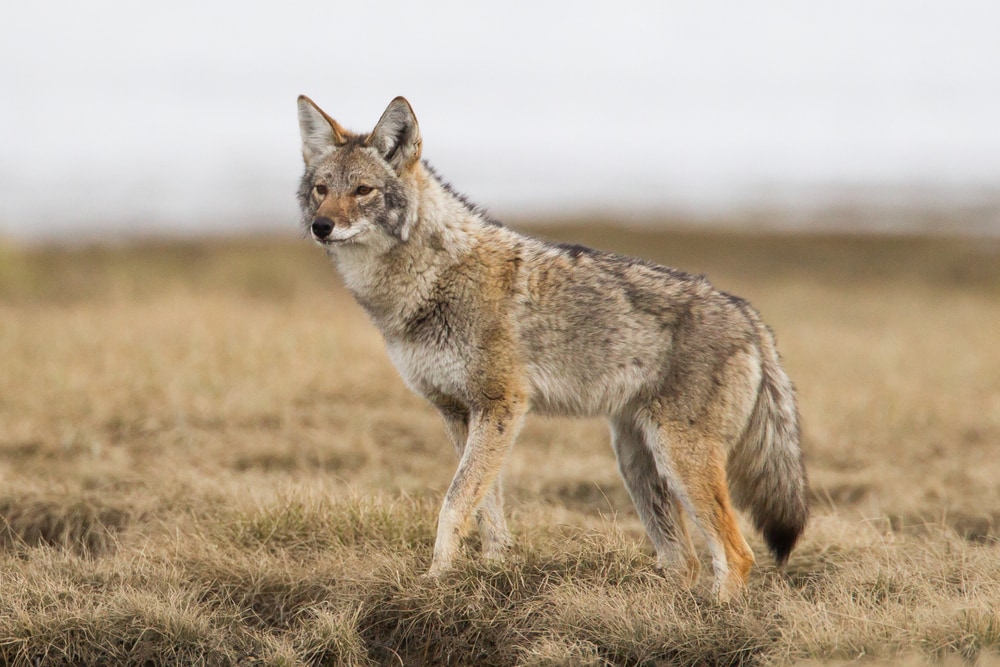
Luckily, there are ways of keeping our pets safe from coyotes. One way is to never leave your pet unattended while outside. It’s unlikely that a coyote will approach if they see a person standing watch over their pet.
Another way to prevent coyote attacks on pets is not to have a backyard garden. Again, coyotes love stealing from gardens. It’s like a bird feeder – supply the right food, and a hungry animal will surely come.
One last solution is to armor your pet! That’s right; they make kevlar vests for small dogs equipped with spikes on the back to make them look larger and more dangerous.
If you can’t be bothered to watch your dog outside, at least suit them up in some armor.
We already saw that coyote extermination is a futile battle. Whether we like it or not, coyotes are here to stay in the countryside, the suburbs, and cities.
The best we can do is take the necessary precautions to ensure that our pets, and ourselves, are safe from these wild dogs.
And speaking of ourselves…
You may also like: Apex Predator List: The Top 12 Predators At The Top Of The Food Chain
Coyotes and People
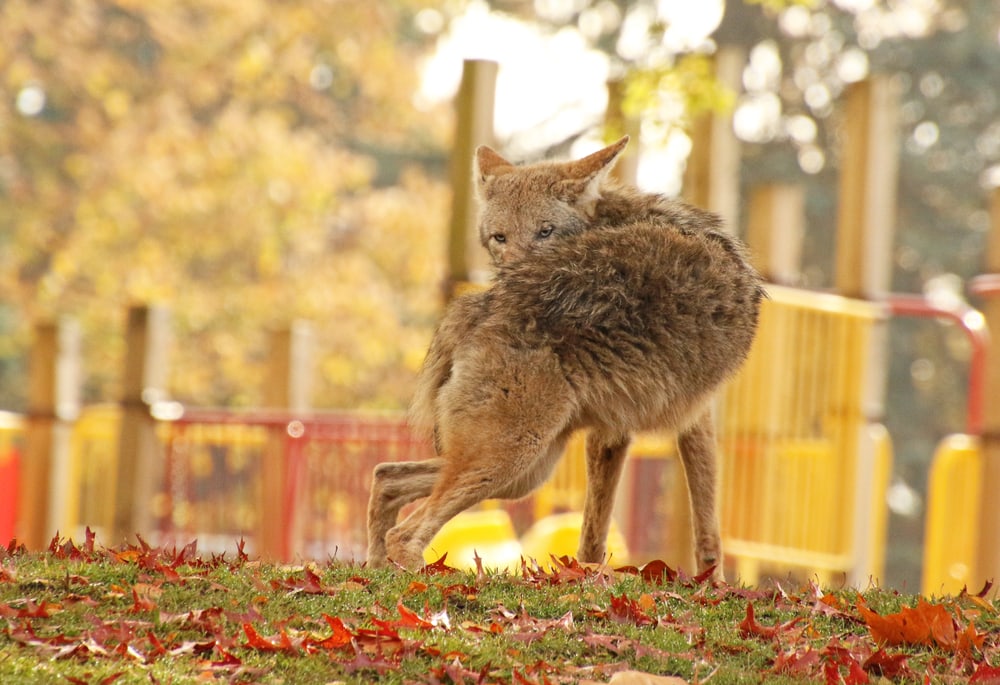
From 1976 to 2006, at least 160 coyote attacks were reported in the United States. Of these 160 attacks in the United States, only one was fatal. The attack occurred in 1986 when a coyote killed a 3-year-old girl in Glendale, California.
Another fatal attack occurred in 2009, not in the United States but in Canada. A 19-year-old named Taylor Mitchell was mauled by two coyotes in Nova Scotia and died later in intensive care.
Every coyote attack on a person, whether fatal or not, is scary and tragic. But, by and large, coyotes pose very little threat to humans.
In almost all cases, coyotes will avoid people at all costs. If anything, they despise having people around as much as we hate having them around.
The Urban Coyote Research Project says it best: “Future coyote attacks could be reduced or prevented through modification of human behavior and public education designed to prevent the habituation of coyotes.”
In other words, it’s up to us to modify our behavior and approach to the coyote situation, ultimately resulting in fewer coyote attacks.
You may also like: 16+ Strongest Bite Force In The Animal Kingdom
Ways to Prevent Coyote Attacks
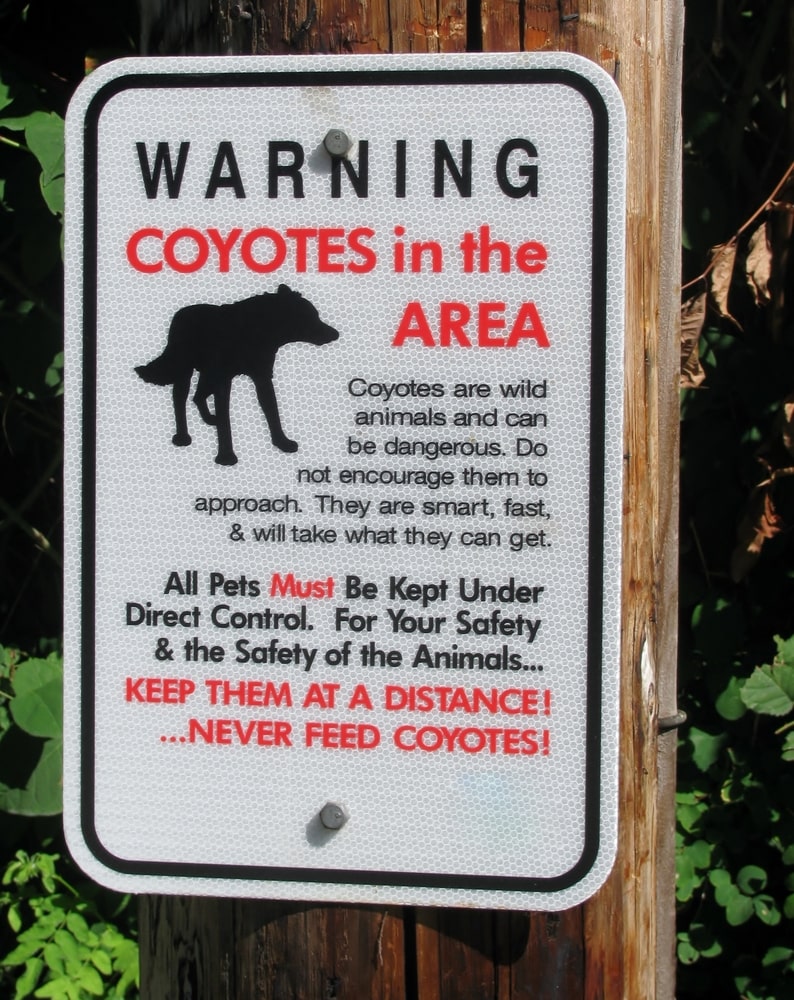
You can take a couple of actions to help prevent coyote attacks.
One action is fairly obvious: Never feed a wild coyote!
Chances are, if a coyote approaches you, it thinks you might have some food to share. This can be problematic because a coyote fed by people will lose fear in humans and think it’s okay to approach them.
In addition, if a coyote is especially aggressive and thinks you might be holding out food, it may attack.
Another way to prevent attacks is to reinstill fear in coyotes that are too close for comfort. This includes shouting, waving your arms, stamping your feet, or clapping your hands. Doing this should be enough to scare any curious coyote away.
Lastly, give them the space they deserve. Don’t approach them, and never corner them. A cornered animal is a dangerous animal.
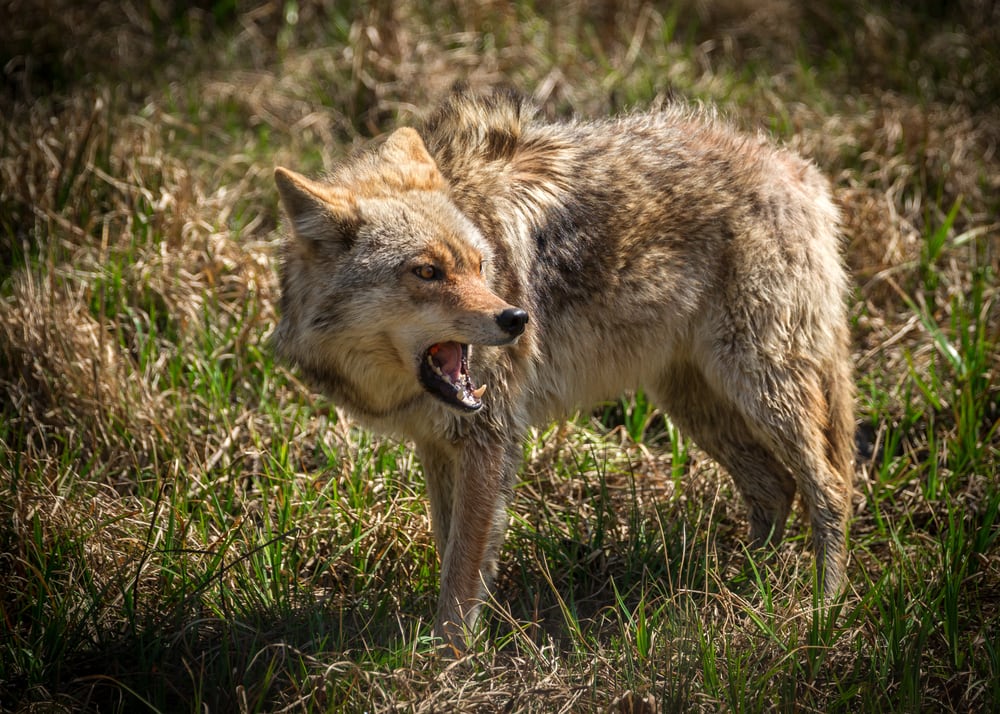
Don’t call them thinking you’ll get a cute reaction like they’re a domestic dog. As the old saying goes, live and let live.
Coyote attacks do occur, but by far, the largest effect they have on humans is their impact on livestock. As long as you aren’t a chicken, lamb, pig, or cow, you will likely never be harmed by a coyote.
With proper education, luck, and time, humans and coyotes can tolerate each other at a respectful distance. One day, seeing a coyote may be no scarier than seeing a deer in a park.
As for stockmen and coyotes, well, that war seems to have no end in sight.
You may also like: 10 Keystone Species Examples And The Important Role They Play In Every Ecosystem
FAQ
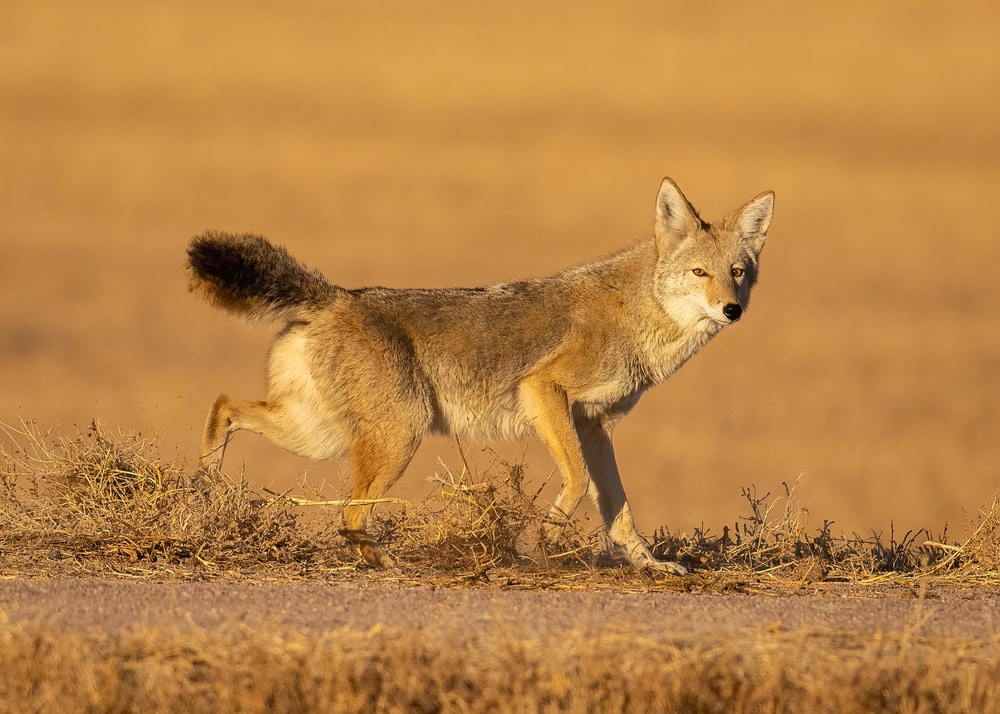
What are coyotes afraid of?
Coyotes are generally afraid of loud noises, bright lights, the scent of predators (such as predator urine or other markings), people, cars, and several other things.
How do you know if a coyote is around?
There are many ways to tell if a coyote is in your area. Chances are you’ll hear them before you see them. Their loud calls are an eerie sign that they’re close by.
Another way is to find and identify tracks, scat, dens, or fur caught on branches, thorns, or fences.
Why do coyotes scream at night?
Screaming coyotes can mean several different things.
First, it’s a way of communicating between individuals or groups, sometimes as an alert that a predator is nearby. It can also be to attract mates.
Rarely does it mean that they’ve made a kill, as this could potentially attract other predators to the kill sight.
As for why they scream at night – coyotes are primarily nocturnal, so it makes sense that you would hear them more after sunset.
Other Outforia Articles
Want to learn more about coyotes and other North American canines? Check out the articles below!








